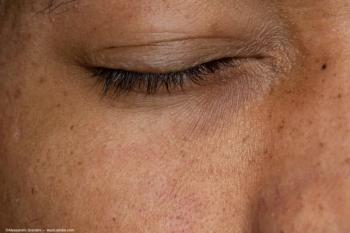
Mechanical microkeratome performance highlighted in clinical, cadaveric studies
A mechanical microkeratome (One Use-Plus SBK, Moria) created flaps with predictable dimensions that were planar and associated with extremely smooth stromal beds, and patients benefited with rapid visual recovery, in a clinical trial including 50 eyes as well as cadaveric eyes. The microkeratome was compared with a 60-kHz femtosecond laser (IntraLase, Advanced Medical Optics) in the study.
Key Points
"The . . . microkeratome is gentle on epithelium, creates predictably thin planar flaps with an extremely smooth, consistent stromal bed, and its use for LASIK is associated with extremely rapid recovery to excellent levels of vision," said Dr. Duffey, a private practitioner in Mobile, AL.
50 myopic eyes
Both flap thickness-assessed with ultrasound pachymetry using a standard subtraction technique-and vertical diameter were found to be very predictable and to rival data that have been reported with femtosecond laser flap creation. Mean flap thickness was 103 ± 9 µm (range, 83 to 123 µm), and mean vertical flap diameter was 9.3 ± 0.3 mm (range, 8.75 to 9.75 mm). The hinge length showed more variability, however, with an average of 63 ± 19° and range from 45 to 75°.
"Importantly, we had a 100% success rate with pupil tracking, achieved iris registration in 81% of eyes, and encountered no epithelial defects or epithelial slides. In addition, we had no buttonholes or free caps, the beds were very smooth and very dry, and postoperatively there were no eyes with flap striae, microstriae, slipped flaps, diffuse lamellar keratitis, epithelial ingrowth, or any other flap-related complications," Dr. Duffey said.
On the first day after surgery, 38% of eyes achieved uncorrected visual acuity (UCVA) of 20/15, and 90% could see 20/20 or better without correction. The proportion of patients achieving 20/20 or better UCVA remained at 90% at 1 month, and 50% of eyes achieved 20/15.
"It's been my observation over more than 5 years of experience with creating thin flaps using the [aforementioned femtosecond laser] and [another microkeratome (LSK-One, Moria)] that the thinner flaps have less edema and are easier to stretch so that precise flap replacement is enhanced. I think the latter benefit accounts for good visual recovery overall, but the UCVA outcomes seem to be further improved with the [microkeratome in this study]," Dr. Duffey said.
He added that his surgical technique involves using a "whale's tail" sponge to stretch the edges of the flap after it is replaced, leaving the center of the cornea untouched.
In the clinical trial, the architecture of all flaps was investigated at 1 to 2 months postoperatively using anterior segment optical coherence tomography ([OCT] Visante software V2.01, Carl Zeiss Meditec). Based on his qualitative assessment of the images, Dr. Duffey concluded that the flaps were planar along the horizontal, vertical, and oblique meridia.
"The standard deviation of measurements with presently available OCT technology is ±15 µm, and so I believe it is not sensitive enough, nor does it have high enough resolution to assess flap thickness reproducibly and quantitatively in all meridia or even along one complete meridian," he said. "Currently, I consider OCT useful as a qualitative test for assessing flap profile."
Cadaveric eyes
Smoothness of the stromal bed was further investigated in a study using two paired sets of cadaveric eyes that were unsuitable for corneal transplantation and less than 5 days postmortem. The microkeratome and femtosecond laser each were used to cut a 100-µm flap in one eye of each pair using typical surgical parameters. A total of 24 scans were taken using the scanning electron microscope (20×, 40×, 80×, and 160× magnifications), and 10 observers were asked to rate in masked fashion the smoothness of the image on a scale of 0 (glass smooth) to 4 (corkboard-rough appearance). Mean scores were 2.24 for the microkeratome and 3.78 for the femtosecond laser.
"Regardless of the magnification, there was an obvious difference in smoothness favoring the [microkeratome]," Dr. Duffey said.
He attributed the improved smoothness of the beds created with the microkeratome to the Velcro-like interface created by the raster pattern of the femtosecond laser.
"The femtosecond laser flap has to be peeled open or bluntly dissected, and the forcefully broken adhesions results in a rougher appearing bed," he said.
Newsletter
Don’t miss out—get Ophthalmology Times updates on the latest clinical advancements and expert interviews, straight to your inbox.


















































.png)


